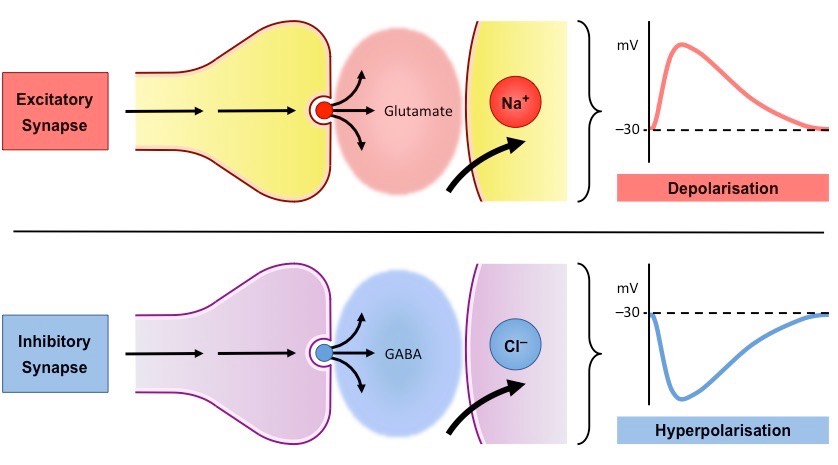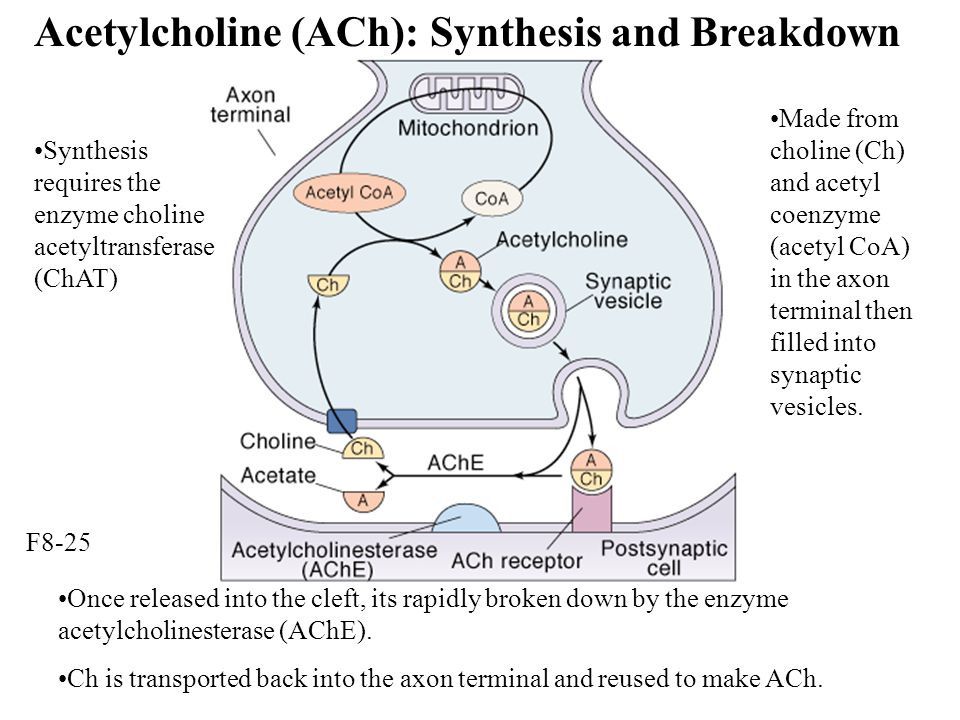Do neurotransmitters either increase or decrease the likelihood the next neuron will fire? Are they destroyed by chemicals in the synapse?
1 Answer
For both your questions answer is YES.
Explanation:

-
Depending on the type of chemicals released from axonic terminal (=presynaptic knob) there are either excitatory or inhibitory synapses.
-
Acetylcholine, epinephrine and glutamate are common excitatory neurotransmitters. Release of such chemicals in synaptic cleft and subsequent stimulus to postsynaptic membrane leads to opening of Na channels. An action potential is generated in postsynaptic neuron and nerve impulse transmission can continue.
-
Most common inhibitory neurotransmitter in human brain is gamma aminobutyric acid (GABA). Release of inhibitory neurotransmitter leads to flooding of postsynaptic end with negatively charged Cl ions. Hence an action potential is not generated to fire the postsynaptic neuron.
-
Neurotransmitters like acetylcholine, etc should be broken down at synapse after being released, to prevent continuous stimulation or overstimulation. Break down of neurotransmitter at synapse is also necessary to keep receptors free for next stimulus.

- An enzyme, acetylcholinesterase, breaks down acetylcholine in choline and acetate. Choline returns inside presynaptic knob where it is reused for synthesis of acetylcholine. Importance of acetylcholinesterase could be noted from the fact that many insedticides, like carbamates and organophosphates, are actually acetylcholinesterase inhibitors. Application of these chemicals exhaust ATP molecules in insects due to continuous neuromuscular transmission.
